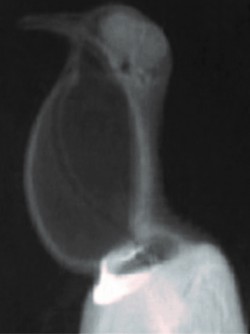Think dinosaurs roared like in ‘Jurassic Park’? The truth, new research says, is a bit wimpier
July 14, 2016

According to the new research, dino sounds may be what scientists call “closed-mouth vocalizations.” Unlike the high-pitched chirps and tweets from the open beaks of songbirds, the closed-mouth sounds are low, throaty whooshes of air. A flesh sac called an esophageal pouch enables birds with proportionally large bodies — think pigeons or doves — to produce the low murmurs.
The researchers figured out the common bird sound like this: First, they collected vocal data on all sorts of animals called archosaurs, which include birds and crocodiles. And, notably, the long-dead dinosaurs. Writing in the journal Evolution, scientists from universities in Texas, Arizona, Utah and Canada analyzed the noises made by many living bird and crocodilian species.
The Washington Post, July 12, 2016
Billings Gazette, July 12, 2016
The Daily Mail, July 12, 2016
DeathandTaxes, July 12, 2016
Time, July 12, 2016
Forbes, July 12, 2016
Popular Science, July 12, 2016
International Business Times, July 12, 2016
Capital Wired, July 12, 2016
Nature World News, July 12, 2016
Science Alert, July 12, 2016
The Nation, July 14, 2016
Gizmodo, July 11, 2016
How To Do Everything, July 15, 2016
